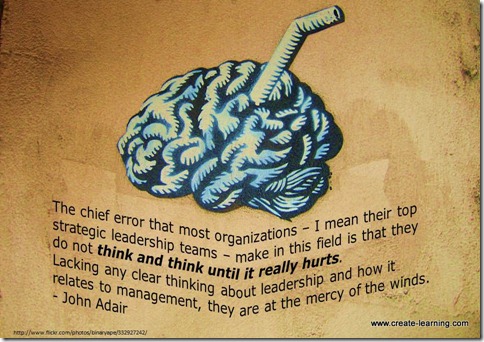An earlier post listed the 7 Principles of Leadership Development in no specific order of importance:
- Necessary Skilled-Knowledge
- Selection
- Using Existing Employees as Mentors
- Education for Leadership
- Strategy for Leadership Development
- The Chief Executive
- The Chance to Lead
Exploring lessons learned and how an organization and I developed a leadership development process for high potential employees.
Necessary Skilled-Knowledge
Like every term within organization development we started by developing a shared definition of Skill and Knowledge.
- Skill (S): An ability, learned through experience and practice, to use given knowledge without having to pay attention, i.e. what a person has learned to do without thinking through the steps involved. (Jaques 1998)
- Knowledge (K): Consists of facts, including procedures, that have been articulated and can be reproduced. (Jaques 1998)
- Skilled-Knowledge (SK): The necessary skills that are needed for managerial-leaders to be able to complete their work, reproducing practices and procedures with the knowledge of the steps to complete the work and be able to articulate to others what procedures are being followed.
Framing and defining what we all mean forced the executive team (and myself) to slow down and be clear in our thinking about what within the organization is currently working well; what is not working well; and how do we define and determine what skilled-knowledge to focus on with the leadership development process.
To grow leaders and leadership demands clear thinking. Many organizations rush into leadership development planning, lacking clear-thinking, find out too late that they are going in the wrong direction.
Symptoms of a rush into leadership development1:
- No clear concept of what leadership is and how it relates to management and the roles that the people will fill with and without leadership accountability.
- No understanding of the different levels of leadership and their different training / educational requirements.
- Ignorance about the history of thinking about leadership and the history of leadership training…programs often reflect the latest fad or fashion.
- What is looked for is a ‘quick fix’ – instant leadership – and when it doesn’t magically arrive organizations move on to the next panacea.
As you can imagine this spurred many more questions than answers.
How did we determine what skilled-knowledge is needed?
Knowing our target population for the leadership development process employees who have been identified as high potential through an internal organizational process, here is how we determined what they needed to know.
- Analysis of organizational structure of how the work actually gets done vs. how the organizational chart claims it gets done.
- Identification of needed accountability and authority of the organizations managers and employees.
- Interviews of existing managers
- Observation of managers and employees involved in the work
- Reviewing job descriptions and determining time-span and complexity of the work
- Focus groups to determine what is working well.
We gathered all this information and spent two months determining what the leadership development training curriculum would be.
Surprisingly to many executives and human resources staff, much of what was found to be effective and needed was basic.
Much of what was not working came from unclear goals, lacking role clarity of employees and management, old organizational folklore of policies, and rushes into reorganization and training that did not last…Sound familiar?
What do you think?
What skilled-knowledge is required for your work? Have you experienced the symptoms of rushing into leadership development?
Reference: John Adair; How to Grow Leaders


